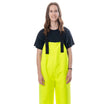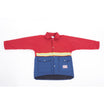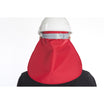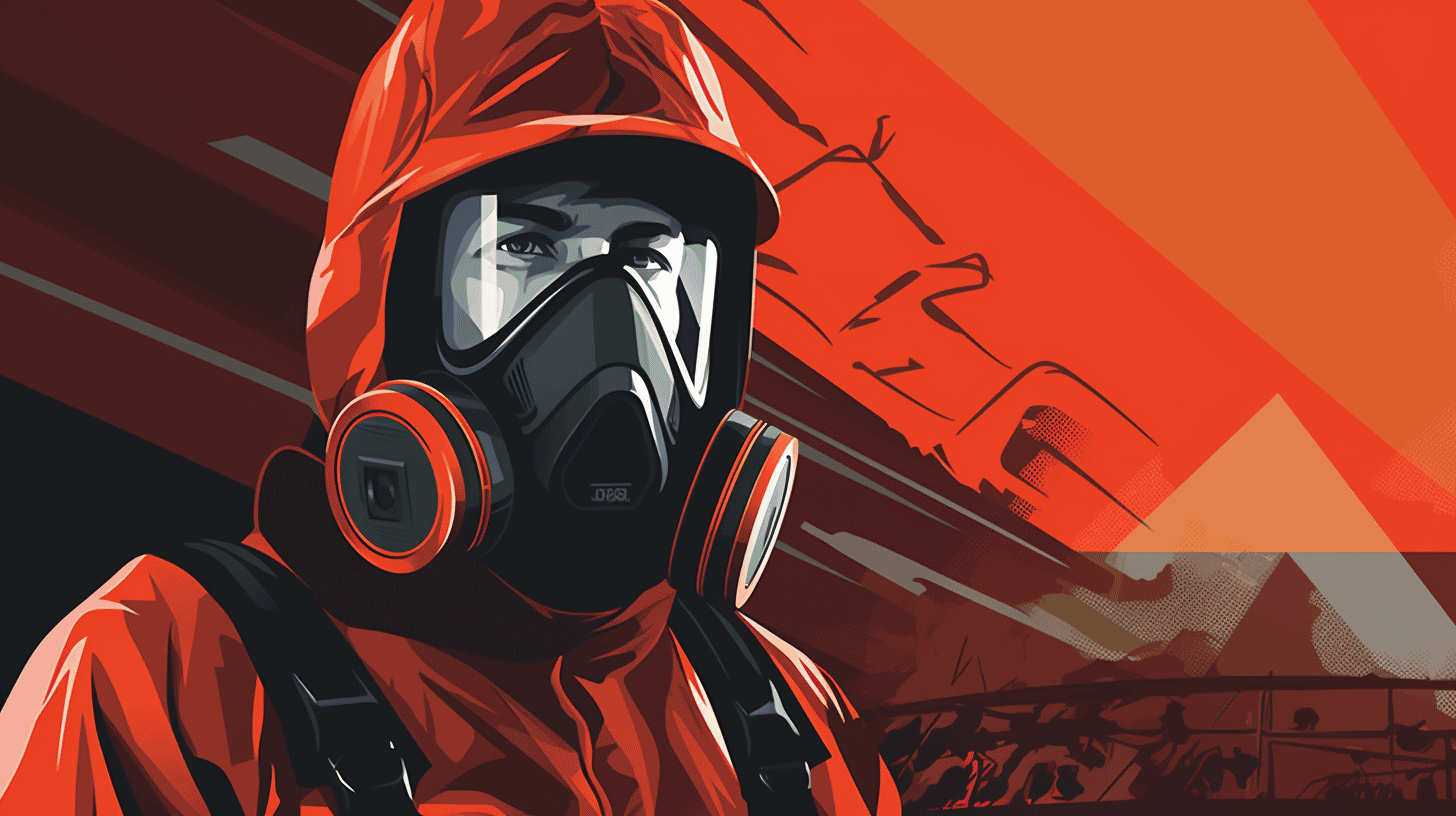There's a reason, well, countless reasons why the construction industry and its workers give so much importance to work gear. In an environment as strenuous and perilous as a construction site, the relevance of comfortable, practical, and safety-enhancing work gear can't be overstressed. The very nature of this industry—profound manual labor, exposure to hazardous elements, and long working hours, makes personal protective equipment (PPE), particularly work clothing, nothing short of a lifesaver.
Equipped with the right gear, construction workers can navigate their workspaces safely, with ease and flexibility, offering them an efficiency boost—all while safeguarding their health and well-being. In this piece, we'll explore how the right workwear plays a crucial role in the construction world, starting from understanding the workwear market, the advantages of comfortable work gear, the relevance of ergonomics, and high-visibility, to the role of weather resistance in construction workwear. Finally, we'll tap into the impact of comfortable work uniforms on employee well-being and productivity in this sector. So, tighten your metaphorical safety belts, as we dig into the matter.
Understanding the Workwear Market
Workwear is an essential part of the day-to-day life in many industries. Garments used in workplaces are designed to achieve different functions such as safety, display organizational hierarchy, and to gain a professional edge. As we delve in further into the understanding of the global workwear market, we will begin to see how various external and internal factors have influenced its growth. In this section, we will explore the global perspective, growth projections and the North American workwear segment of the market.
Global Perspective
Just a few years ago, in 2023, the global workwear market stood tall over USD 17.95 billion. This substantial figure is the result of various industries recognizing the value of functional and professional-looking work clothes. Yet, the global workwear market is showing no signs of slowing down. In fact, it is projected to expand even further, to an impressive value of an estimated USD 24.64 billion by the year 2029. This market's growth will be fueled by a compound annual growth rate (CAGR) of an impressive 4.5%.
Growth Projections
As we venture beyond the current date, the projections are leaning heavily towards the growth of the functional workwear apparel market. While there is already solid demand for functional workwear globally, it is expected that from 2023 to 2031, the sector will grow at a CAGR of 6.5%, indicating increased recognition for the need for functional workwear. By the time we reach 2031, it's estimated that the value of this segment will reach a magnificent USD 505.1 billion.
The North American Segment
The North American continent is no stranger to the significance of workwear. It's seen in every industry, from the factories of Detroit to the modern offices of Silicon Valley. Currently, the value of the North American workwear market is projected to reach as much as USD 20,870.1 million by 2033. That's a growth rate of 5.8% from 2023 to 2033. The remarkable growth projection is a testament to the region's value for proper work attire, be it for safety, functionality, or professional representation.
To keep up with these expected trends, it is essential for industry players to stay ahead by proactively enhancing their workwear collections. By incorporating innovative designs, sustainability, and improved quality standards, businesses can tap into these promising growth avenues in the workwear market for increased market share and revenues.
Advantages of Comfortable Work Gear
We often underestimate the importance of comfortable and functional work gear, particularly for people working in physically demanding industries such as construction. Right from enhanced mobility to safety at the workplace, wearing well-fitted, comfortable work clothes can significantly impact job performance. This section explores the far-reaching advantages of comfortable work gear, presenting cogent arguments for its crucial role in fostering a healthy and efficient work environment.
Enhanced Mobility & Reduced Fatigue
To begin with, comfortable construction clothing can greatly enhance workers' mobility, reducing fatigue and enabling them to perform their tasks more efficiently. Imagine wearing a suit that's too tight or jeans that are too loose at your worksite. Not only would your movement be restricted, but you'd suffer unnecessary fatigue as a result. On the contrary, clothes that fit you comfortably can make it easier for you to navigate your workspace and prevent early onset of tiredness, keeping you active for a much longer duration.
Improved Workplace Safety
Workplace safety forms a vital aspect for industries like construction. The use of high-quality, comfortable workwear can dramatically reduce injuries and fatalities. Not only do they offer necessary protection against workplace hazards, but they also engender a sense of security in workers, thereby fostering a safety-conscious culture.
Increased Productivity
Nothing boosts productivity like having happy and satisfied employees. And nothing makes employees happier than feeling comfortable and safe in their work attire. When employees are at ease with what they're wearing, they can concentrate better, thereby enhancing their productivity significantly.
High Retention Rates in Construction
Comfortable attire goes a long way in ensuring employee satisfaction. In an industry like construction where retention rates are often an area of concern, offering employees well-designed, comfortable workwear can tip the scales in your favor. Imagine being able to reduce turnover simply by investing in better clothing for your workforce.
Addressing High-Wear Areas
Attire designed with reinforced areas such as knees and elbows cater to the high-wear and tear nature of construction tasks. By addressing these specific needs, such attire greatly enhances their longevity and usability, delaying the need for replacements.
Comfortable Body Temperatures
Outdoor workers, particularly in colder climates, swear by the utility of heated work clothes. By maintaining body temperatures at comfortable levels, these clothes aid concentration and efficiency, especially during the harsh winter months.
Sustained Performance During Long Work Hours
Lastly, hi-viz clothing options that offer both comfort and visibility enable sustained performance during long work hours. Simultaneously, they ensure that the workers remain visible in harmful environments, reducing workplace accidents.
The advantages of comfortable work gear make a compelling case for the Balance of Comfort and Durability in construction attire. Making small changes in your procurement strategies can yield significant improvements in productivity, employee satisfaction, and—most importantly—workplace safety.
Role of Ergonomics and High-visibility in Workwear
In a bustling workspace, appropriate workwear is much more than just a uniform. It's an essential tool that equips workers with comfort and security while performing their tasks. Particularly, ergonomics and high-visibility in workwear play crucial roles in keeping a harmonious workspace. By melding the principles of ergonomics with strategic designs, companies can increase productivity while ensuring utmost safety. Let's delve into these pivotal aspects in the subsequent sections.
Ergonomic Compatibility
Ergonomic compatibility in workwear eliminates the unnecessary strain on the body. By designing clothing that encourages good posture, supports correct body mechanics, and facilitates efficient movement, companies can significantly boost their employees' productivity. Imagine the ease your muscles feel when the strain is reduced from an 8-hour long task! This is not a luxury; rather, it's necessary to promote workers' well-being.
Using ergonomic principles in workwear design means considering a range of factors including:
- Material selection – Soft, breathable materials can help reduce discomfort during sustained physical activities.
- Fit – The clothing should not restrict movement or create uncomfortable pressure points.
- Design – Consider functional aspects such as pocket placement, adjustable straps, and other features that enhance comfort and productivity.
Remember, every job has unique demands and different workwear requirements. Always choose ergonomically compatible workwear that suits your specific needs.
Importance of High-visibility
Now let's talk about another key feature of modern workwear: high-visibility. This aspect is especially critical in challenging work environments like construction sites. Wearing neon bright, reflective clothing makes sure workers are always visible, drastically reducing the risk of accidents, especially under adverse conditions.
High-visibility workwear ensures:
- Increased visibility in low-light and foggy conditions
- Clear demarcation of personnel in a crowded workspace
- Enhanced visibility for drivers, reducing the likelihood of vehicle accidents.
Ergonomics and high-visibility are not just advantageous, they are mission-critical elements to ensure an all-round safety protocol. Moreover, incorporating these elements into workwear is a concrete step organizations can take towards caring for their employees -- an investment in their human resources that yields dividends in the form of increased productivity, reduced accidents and improved workplace atmosphere. Don't let your workers blend into the background, help them stand out and perform their best - safely and efficiently.
Weather-Resistant Construction Workwear
When the skies cloud over, and harsh weather conditions loom, the construction site doesn't simply shut - the work has to go on. Meet weather-resistant construction workwear - the unsung hero that shields our construction professionals against unruly weather, keeping them safe, dry, and comfortable. In this light, we are addressing two paramount elements - the significance of protection against the elements and maintaining productivity even under adverse conditions.
Protection Against Elements
Construction jobs, without doubt, call for some resilience. Workers are frequently exposed to an array of weather conditions, from extreme heat to bone-chilling cold, gusty winds to pelting rain.
But with the right gear, the impact of these weather perturbations can be significantly reduced. Quality workwear that protects against elements like rain, snow, and wind is instrumental. It forms an essential layer of defense that:
- Ensures workers' safety by reducing the risk of hypothermia or heatstroke.
- Enhances visibility in poor weather conditions, vastly minimizing the chances of accidents.
- Keeps workers dry and warm, empowering them to focus on the task at hand.
Utilizing the Best Rain Gear for Construction evolves from being a mere option to an absolute mandate when considering the immense protection it offers.
Maintaining Productivity in Adverse Conditions
Often, productivity at construction sites is directly proportional to the workers' comfort. No one can be expected to perform at their peak when they're drenched or frozen. This is where weather-resistant workwear steps in, not as a luxury, but as a necessity.
Including these essential pieces of attire in their daily work-life significantly enhances workers' efficiency as it:
- Allows flexibility and ease of movement, regardless of the weather conditions.
- Provides sustainability, letting the workers continue their tasks without any weather-induced hindrances.
- Boosts morale by showing that their health and comfort are valued, leading to increased motivation and productivity.
So, while there may be no control over the weather, adopting weather-resistant construction workwear is a proactive step forward. It protects workers against possible weather adversities, keeping productivity unhindered and spirits high. After all, a construction site that prioritizes its workers' safety and comfort is a construction site that flourishes.
Impact of Comfortable Work Uniforms on Employee Well-being and Productivity
What happens when employees feel comfortable in their work uniforms? It goes beyond simply looking smart and professional. Ensuring your staff are outfitted in comfortable work uniforms has far-reaching benefits, impacting employees' well-being and, surprisingly, their productivity levels.
Sounds intriguing, right?
A Positive Impact on Employee Well-being
Research suggests that comfort plays a crucial role in employee well-being. So, what does comfort do for us?
- Free Flow of Movement
Comfortable uniforms designed with flexibility in mind allow employees to perform their tasks with ease. A well-tailored shirt or a stretchy pair of trousers frees movement, making day-to-day tasks less cumbersome and reducing physical strain.
- Safety First
Comfort isn't purely aesthetic; it can link directly to employees' safety. For instance, non-slip shoes in a restaurant can prevent kitchen mishaps, while breathable fabrics in a manufacturing setup can prevent heat stress.
- Feeling Good
Comfortable uniforms can make employees feel good, boosting their self-esteem and overall well-being. Imagine spending an eight-hour shift in a perfectly-fitted outfit that reflects your professional image. It's a mood elevator, right?
Comfort Fuels Productivity
The connection between comfort and productivity may not seem obvious, but it's undeniable. When employees feel comfortable, they are in a better mental and physical state to focus on their work.
- Comfort reduces distraction: Uncomfortable clothing can be a significant distraction. When garments pinch, bind, or scratch, employees inevitably focus more on their discomfort than their tasks. On the other hand, a comfortable uniform eliminates these issues, allowing employees to concentrate on their work.
- Comfort can enhance mood: As previously mentioned, feeling good in your clothing can boost mood, which in turn enhances productivity. There's a profound psychological impact linked to our sartorial choices - when we're comfortable, we're happier, and when we're happy, we're more productive.
- Comfort improves health: Uncomfortable uniforms can contribute to physical discomfort and even health issues over time. A comfortable uniform reduces these risks, leading to less absenteeism and improved productivity.
So you see, the introduction of comfortable work uniforms is not merely a superficial switch. Its impact seeps into the well-being of employees and, remarkably, contributes positively to their productivity metrics. The bottom line? Comfort in work attire matters, and it's time businesses reassessed the importance of a 'good' work uniform. It's not just about looking the part, but feeling the part too, and ultimately performing the part.
Conclusion
Optimized work gear isn't merely a fashion statement, it's a workplace necessity that safeguards the health and well-being of workers, establishes an identity and boosts productivity. Its benefits are undeniable – it enhances mobility, ensures safety, regulates body temperature, and supports longevity in work hours. Moreover, innovations in the field of work gear, like ergonomically designed wearable and weather-resistant clothing, are continuously raising the comfortability bar.
At the heart of this growing industry is the zeal to create a safer, more efficient workspace, where well-being and productivity go hand in hand. Companies like Rain Gear Pro exemplify this commitment. Their specially designed chainsaw safety pants, created to maximize comfort and ensure protection, are a testament to the industry's potential and promise. With both outdoor workers and the companies employing them increasingly recognizing the value of top-grade equipment, the future of workwear market indeed looks bright.
Frequently Asked Questions
-
Why is comfortable work gear important for construction workers?
Comfortable work gear is important for construction workers because it allows for increased mobility, reduces fatigue, prevents injuries, and enhances overall productivity.
-
What are the key features to consider when choosing comfortable work gear for construction workers?
When choosing comfortable work gear for construction workers, consider features such as ergonomic design, moisture-wicking fabrics, adjustable straps, padding and cushioning, proper ventilation, and appropriate sizing.
-
How does comfortable work gear impact the safety of construction workers?
Comfortable work gear plays a vital role in the safety of construction workers as it allows them to focus on their tasks, move freely without restrictions, and reduces the chances of accidents caused by discomfort or distraction.
-
What types of comfortable work gear are commonly used in the construction industry?
Common types of comfortable work gear used in the construction industry include comfortable footwear, padded gloves, supportive safety helmets, breathable and moisture-wicking clothing, and ergonomic tools.
-
Where can I find high-quality and comfortable work gear for construction workers?
High-quality and comfortable work gear for construction workers can be found at specialized workwear stores, online retailers, and through industrial suppliers. It's important to choose reputable brands that prioritize safety and comfort.





















Leave a comment
This site is protected by hCaptcha and the hCaptcha Privacy Policy and Terms of Service apply.